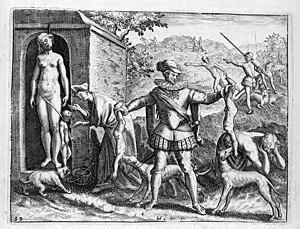This is a blog about people and things that can help understand world around us better sometimes. If is that so...let's find out togheter.
Saturday, April 20, 2013
Beyond the Myth of The Inquisition IV
After the original crisis,
more significantly, it just happened that the Inquisition outlived its purpose
and lingered on. Some have always insisted that at any time the Catholic Church
could re-activate this institution which they allege rests on torture and the
extraction of confessions by coercion, among other ugly features. Honest students
of history regard this assertion as mere propaganda. Note the following secular
source. Reginald Trevor Davies, author of The Golden Century of Spain, writes
the following in his article in volume 21 of the Encyclopaedia Britannica. The Spanish church was wealthy and powerful because the people were
intensely religious and because it was largely a national institution in which
no foreigner might hold office and in which the crown was supreme (papal power
having been reduced almost to the vanishing point). It was, consequently, a fact
of serious political importance that during the anarchy of Henry IV’s reign (1454-1475)
the Jews gained great power and influence. They might compel — sometimes
by means of their usury — their debtors to renounce the Christian religion;
and Marranos (baptized Jews) often preserved their old religious faith in secret.
At the same time the power of the Moriscos (baptized Moors) had increased, and
they were reviving ancient heresies such as the half-forgotten Manichaeism. The
Catholic kings consequently consulted Pope Sixtus IV, who thereupon issued a bull
(Nov. 1, 1478) authorizing them to choose two or three inquisitors notable for
their virtue and learning, to whom he granted jurisdiction. The bull was put into
force by a royal cedula (decree) issued in Medina del Campo (Sept. 17, 1480) ordering
the establishment of the Holy Office in Castile. The original
crisis was a real one. We can only regret that the “inquisitors notable for their
virtue and learning” were not as often found to do the work as was originally
intended by pope and king. If anything, inquisitors and their lesser employees
(“familiars”) were more prone to pettiness, laziness, and greed, than to cruelty.
Of these, greed was dominant. Church historians have been slow to study seriously
this matter of the Inquisition. “Church history generally lagged behind other
kinds of historical research, and confessional feelings still ran sufficiently
high as to make the history of inquisitions a difficult and disputed topic.”
Fortunately, all this has changed in our time, and three whose work is perhaps
most helpful to us are not Catholics at all. Only one of them is a “church historian”
properly speaking. Let us next look at the remarks of Owen Chadwick, and then
continue with a more detailed presentation of the work of Henry Kamen, and
Edward Peters, both already cited. No one could accuse any of these respected
academics, the first two of them British, of any denominational pro-Catholic bias.
Yet they show the Inquisition in a different light from that of the exaggerated
misrepresentations the Spanish themselves call The Black Legend (La Leyenda Negra).
Subscribe to:
Post Comments (Atom)

No comments:
Post a Comment